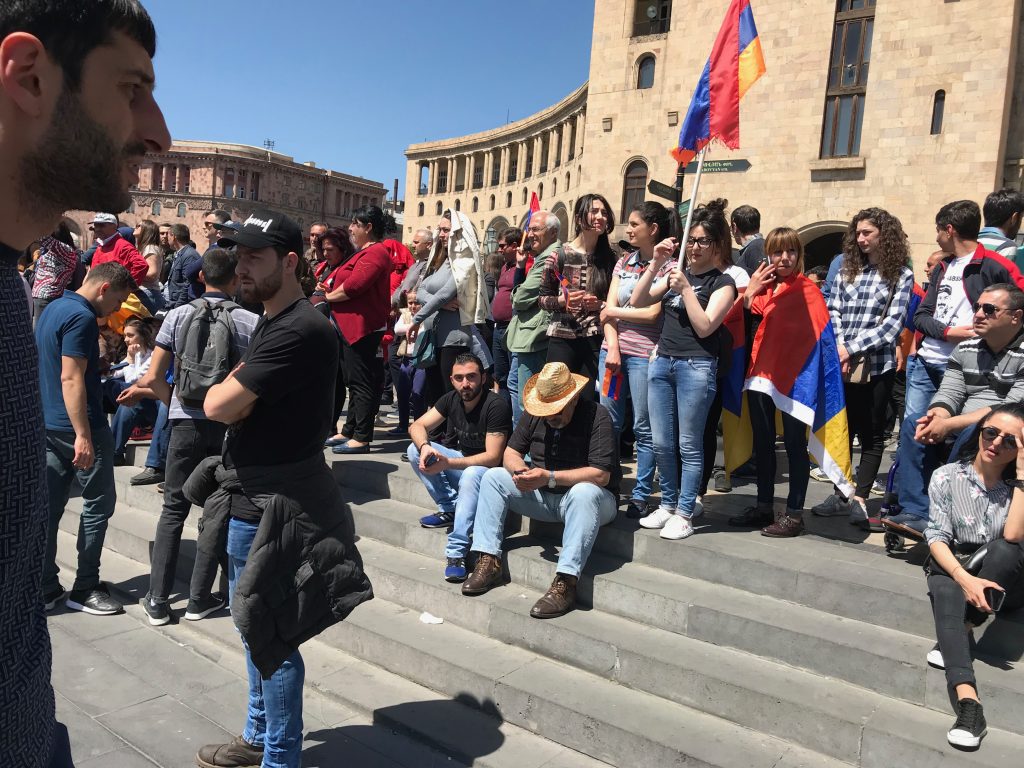
On Tuesday, April 17, when the Republic of Armenia got its first prime minister as it transitioned from a semi-presidential to a parliamentary system, the new boss looked suspiciously like the old boss. Serge Sargsyan, who served for ten years as the country’s president and spearheaded the constitutional changes as he approached his two-term limit, was named the country’s prime minister without being directly elected to that office by the Armenian people. With no term limits under the new constitution, he was poised to potentially stay in power indefinitely. That is, until the thousands of people peacefully flooding the streets of Yerevan over the past two weeks had their say.
On Monday, April 23, Sargsyan resigned, and Nikol Pashinyan, the opposition leader who was briefly jailed after a televised dialogue with Sargsyan, was released. The subsequent jubilance in Yerevan’s streets, where uniformed soldiers joined protesters of all ages, has been exhilarating for Armenians, even as the future is anything but clear. Former Prime Minister Karen Karapetyan has been named acting prime minister, and Pashinyan has called for members of parliament to quickly nominate and vote on a “people’s candidate,” followed by snap parliamentary elections. At the time of writing, Sargsyan’s Republican Party of Armenia (RPA) had agreed to elections on May 1, and claimed it would not nominate a candidate, but there remained several procedural levers with which the RPA could attempt to block change and remain in power.
When the Soviet Union collapsed in 1991, there were hopes that the newly independent Republic of Armenia was well placed to join the ranks of the world’s liberal democracies, due to its strong pro-independence movement, and the influence of its large and wealthy diaspora in the west. Instead, after a somewhat promising start, its fledgling democratic institutions have proved a disappointment. Elections have often been fraudulent, power
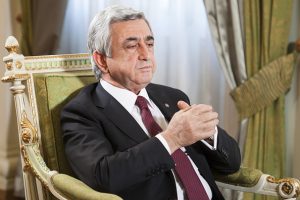
has been consolidated in the ruling Republican Party of Armenia, and in recent years, most of the “opposition” parties that have managed to get elected haven’t done much opposing anymore. The real opposition has either been behind bars or in the streets, where police have seemed to have no qualms about following orders to injure and even kill their fellow citizens.
Despite this, Armenians are no strangers to street protests. In 1988, while still part of the Soviet Union, the “Karabakh Committee” filled Yerevan’s streets with demonstrations demanding the unification of Nagorno-Karabakh with the Armenian Soviet Socialist Republic, later morphing into the Pan-Armenian National Movement and demanding independence. On March 1, 2008, after blatantly fraudulent elections brought Serge Sargsyan to power, thousands of protesters filled the streets, and many were killed in the subsequent confrontation with police. In the summer of 2015, citizens brought the capital to a standstill to protest a 17% electricity price hike, in what came to be known as the “Electric Yerevan” protests. Then came the July 2016 Yerevan hostage crisis, in which members of a group calling themselves “Daredevils of Sasun” took over a police station, demanding the release of political prisoner Jirayr Sefilian, and the resignation of then President Serge Sargsyan. The public sympathized with the hostage takers, and two weeks of huge street protests ensued.
It is all too easy to be misled by the intent of formal political reforms. In theory, there are many reasons to prefer a parliamentary system to a presidential one, and when Armenia’s ruling elites first floated the idea, it was viewed favourably by the Council of Europe. But approval of the idea of parliamentary democracy misses the point entirely in a system in which, thanks to the incremental degradation of the democratic process, genuine opposition parties already had virtually no hope of being elected. In addition to Sargsyan’s Republican Party of Armenia, the new constitution was steadfastly supported by the Armenian Revolutionary Federation (ARF, heirs to the historical Dashnaks, the ruling party of the First Armenian Republic, 1918-1920), a party with some diaspora following, which claimed a parliamentary system would be a more democratic alternative for Armenia. However, in recent years the ARF had become the Republican Party’s junior coalition partner, shamelessly supporting the ruling regime’s initiatives, and abandoning anything resembling a “revolutionary” program. Armenia’s parliament, in short, had become a rubber stamp for Sargsyan, and if it did not check the president’s power before, critics were quick to point out that it would be even less likely to do so under a parliamentary system, characterized by fusion, rather than separation of powers.
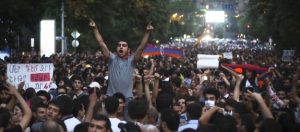
The legitimacy of the constitutional reforms has been in doubt since their inception. Like the 2008 election that first brought Sargsyan to power, the December 2015 constitutional referendum was widely criticized as fraudulent. And when Sargsyan insisted he had no intention of seeking the new prime minister position, the opposition knew better, predicting the events of mid-April with pinpoint accuracy. Observers have compared Sargsyan’s transition from president to prime minister to the Putin-Medvedev “castling” move in Russia. While not perfect, this comparison captures the intent behind the reforms, which was clearly to cement Sargsyan and his party’s hold on power. As critics have noted, even his office was slated to remain the same, only with a different sign on the door.
It is difficult to predict what a post-RPA Armenia might mean for Armenian politics and society, in part because Armenia’s political parties cannot meaningfully be plotted on a left-right political spectrum. Aside from the Communist Party (which has not won a seat in parliament since 1999), Armenia’s parties are rarely programmatic. The ruling RPA has been no more than a party of power, assuring its members and clients access to the government’s coffers. The Prosperous Armenia party, led by Gagik Tsarukyan, an oligarch (and former wrestler) who once challenged Sargsyan but was later brought to heel, has generally voted with the government, including most recently to “elect” Sargsyan prime minister. The ARF is officially a social democratic party, and indeed, a member of the Socialist International, but its political platform has focused most on genocide recognition, relations with Turkey, and the Nagorno-Karabakh conflict, and as previously mentioned, in recent years, it saw its interests as aligned with those of the RPA. Two days after Sargsyan’s resignation, the ARF officially pulled out of the ruling coalition, and the Tsarukyan Bloc announced they were joining the resistance, but it is difficult not to see cynical self-preservation in these moves. What differentiates the ruling regime from the opposition parties has not been differences of opinion over policy, but rather, over the desirability of an oligarchic system of patronage and corruption. In this sense, while some
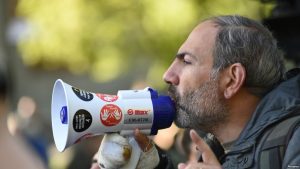
journalists have suggested Nikol Pashinyan’s Civil Contract party and larger Yelq Bloc have a more social democratic bent, the protests have been specific to ridding the state of the ruling regime as a corrupt, oligarchic usurper of power, rather than in opposition to more specific policies or policy failures. It remains to be seen whether a new, non-RPA government (whether led by Pashinyan or not) will result in meaningful changes in public policy. That said, a crackdown on political corruption would theoretically redirect money from the pockets of government leaders to society, and a reduction in the quotidian bribe regime would keep more money in the pockets of ordinary Armenians, one third of whom are still living on approximately USD $3/day.
Armenia has a number of small, but committed NGOs advocating women’s rights, LGBTQ rights, environmental protection, etc., but like many post-Soviet states, it lacks a strong tradition of independent civil society organizations. Average Armenian citizens tend not to join them, even if they support their aims, and their members have often faced threats and violence. There is reason to be optimistic that their voices are more likely to be heard in a post-Sargsyan Armenia, especially given that Pashinyan’s party, Civil Contract, includes members with experience in environmental NGOs, and two prominent women’s rights activists have served on its board of trustees. But we should be measured in our expectations where gender-related issues are concerned. Armenia’s staunchly neo-patriarchal society will be slow to change, and the degree to which Armenian nationalism invokes the “traditional Armenian family” trope, and indeed, the dearth of women taking on speaking roles at the ongoing protests, suggests that, despite its small, dedicated women’s march on April 26, this revolution, like nearly all earlier examples around the world, risks largely relegating women’s issues to the sidelines.
On environmental issues, we may see more movement. Oligarch-owned mining companies are linked to some of the most serious pollution crises in the country, like the controversial open-pit copper mine in the village of Teghut. A movement explicitly opposing oligarchic political control can be expected to challenge the legitimacy of these projects, though we should also expect significant pushback and self-serving economic necessity arguments. In recent days, Yerevan residents have also been picketing oligarch-owned supermarkets, demanding an end to monopolies and increased worker’s rights.. One of these, the “Yerevan City” chain, is owned by RPA member of parliament Samvel Aleksanyan, whose central Yerevan location took over, and partially demolished, the city’s historic covered market building.
The scant Western media coverage of events in Armenia has tended to fixate on finding some sort of Russia angle. Yet among Armenian citizens, regardless of political stripe, Russian regional hegemony is widely accepted as an enduring, inevitable, and not entirely undesirable state of affairs. It is perhaps for this reason that the perennial conspiracies pertaining to “colour revolutions” funded by George Soros and “the West” were barely even heard with respect to events in Armenia. In this regard, Nikol Pashinyan’s insistence that he is neither pro-Russian nor pro-Western, but pro-Armenian, is remarkably consistent with views expressed by the Sargsyan regime and its predecessors. Russian influence is of course a regular feature of Armenian politics. In 2013, for example, prior to Ukraine’s President Yanukovych’s similar volte-face, Sargsyan hastily abandoned plans to join the EU Association Agreement in favour of the Russian-led Eurasian Economic Union, immediately after meeting with Vladimir Putin. While this was rightly seen as bowing to Russian pressure, it is a mistake to see his prior stance as particularly pro-EU. Joining the EU agreement, though symbolically irritating to Moscow, would never have amounted to any sort of distancing of the Armenian regime from Russia. Armenia will undoubtedly remain part of the Collective Security Treaty Organization (CSTO), the two Russian military bases in Armenia will remain there, and there is simply no constituency in the country for a deterioration of relations. Of course, while Russia’s response thus far has been measured, there is no guarantee against Moscow deciding future developments in the “Yerevan Spring” threaten its interests, and it has many subtle levers of power to pull, short of a Crimea-style “little green men” takeover. Most notably, Russian (and Russian-Armenian) businessmen are heavily invested in virtually every sphere of the Armenian economy.
Likewise, there is little change to be expected regarding Armenia’s approach to the war with Azerbaijan over Nagorno-Karabakh. There are no serious Armenian voices arguing in favour of the international community’s preferred solution to the conflict, which is for Armenia to withdraw its forces from Nagorno-Karabakh and the surrounding territories and recognize Azerbaijan’s sovereignty over them. Smaller-scale peace initiatives exist, such as meetings between Armenian and Azerbaijani women’s groups to discuss the ramifications of the conflict, but these have often exposed participants on both sides of the border to accusations of disloyalty. The ongoing effects of the frozen conflict are devastating, especially for the residents of villages in the heavily-mined border region, but no one should expect any sudden movement in negotiations with Azerbaijan. If anything, there is a risk that Azerbaijan might take advantage of Armenia’s internal disarray and attempt a new offensive to reclaim territory. In comparison, the status quo is immeasurably preferable.
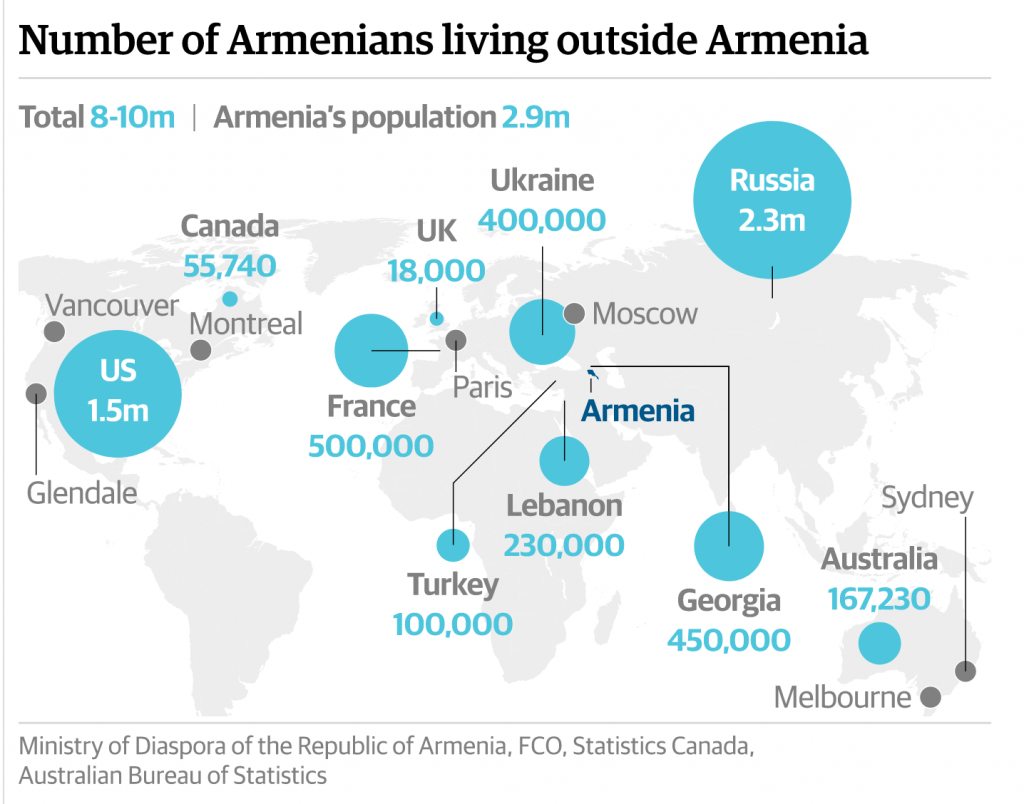 Relations with the diaspora, and the question of whether any significant number of diasporans would repatriate to the Armenian state, are perennial topics of discussion in Armenia. Armenian citizens have also consistently voted with their feet, with thousands emigrating each year since independence in search of better economic prospects elsewhere. The repatriation discussion has generally considered the wooing home of these recent emigrants a more likely prospect, and in some ways, a more desirable one. Realistically speaking, most recent emigrants will decide whether to return to Armenia based on the ability to find gainful employment. This is especially the case given that the vast majority have moved to Russia, where the political climate differs little from the one Armenians are attempting to change. However, the calculus differs for Armenians born in diaspora, some of whom are willing to accept an “ethnic discount”, career-wise, on idealistic grounds, but tend to consider the political climate when deciding whether a move to Armenia will result in a good life for their children. Speakers at the recent protests invoked the need to promote repatriation – specifically, to reach a population of 4 million as quickly as possible (currently, it is under 3 million). Good, representative government may tilt the scales somewhat, and there is no doubt that this movement is producing an upswell of pride in the diaspora. However, the new authorities who come to power should take note: without a significant improvement in equality for women in Armenian society, recognition of the equal value of girl children within families (including a halt to the pervasive practice of sex-selective abortion), and a serious attempt to address the epidemic of domestic violence against women, the movement of diasporans from the west to Armenia will remain a trickle.
Relations with the diaspora, and the question of whether any significant number of diasporans would repatriate to the Armenian state, are perennial topics of discussion in Armenia. Armenian citizens have also consistently voted with their feet, with thousands emigrating each year since independence in search of better economic prospects elsewhere. The repatriation discussion has generally considered the wooing home of these recent emigrants a more likely prospect, and in some ways, a more desirable one. Realistically speaking, most recent emigrants will decide whether to return to Armenia based on the ability to find gainful employment. This is especially the case given that the vast majority have moved to Russia, where the political climate differs little from the one Armenians are attempting to change. However, the calculus differs for Armenians born in diaspora, some of whom are willing to accept an “ethnic discount”, career-wise, on idealistic grounds, but tend to consider the political climate when deciding whether a move to Armenia will result in a good life for their children. Speakers at the recent protests invoked the need to promote repatriation – specifically, to reach a population of 4 million as quickly as possible (currently, it is under 3 million). Good, representative government may tilt the scales somewhat, and there is no doubt that this movement is producing an upswell of pride in the diaspora. However, the new authorities who come to power should take note: without a significant improvement in equality for women in Armenian society, recognition of the equal value of girl children within families (including a halt to the pervasive practice of sex-selective abortion), and a serious attempt to address the epidemic of domestic violence against women, the movement of diasporans from the west to Armenia will remain a trickle.
Armenian citizens clearly saw the latest step in the gradual de-democratization of their country as intolerable, but I would argue that neither they, nor the regime, could have anticipated this victory. Sargsyan seems to have been caught off guard by this turn of events, which is surprising given the frequency of serious street protests in Armenia. Then again, with the security services at his side, and the rising tide of “leaders for life” elsewhere, he may simply have felt the odds were worth playing, and that some portion of the dissatisfied but disempowered public would “let off steam” in the streets, while the rest did their grumbling at home. But these protests were remarkable in that they included every conceivable segment of Armenian society. While the press focused on the large numbers of youth in the streets, they were joined by pensioners, villagers, activists, soldiers, and ordinary working people of all ages.
There are plenty of potential dangers ahead for the Armenian state, not the least of which is that the regime could stage a counter-revolution of sorts. At present, it is difficult to predict the loyalties of the Armenian police, and the Ministry of Defense has threatened protesting soldiers with severe disciplinary action. In short, while Armenia has no history of coups, the so-called “power ministries” still pose a formidable obstacle to a peaceful transfer of power. But in a world in which “competitive authoritarian” regimes seem to be becoming less competitive and increasingly authoritarian, the Armenian people’s peaceful toppling of a would-be leader for life is a refreshing and hopeful development.
 Kristin Cavoukian holds a PhD in Political Science, specializes in Armenia-diaspora relations and teaches at the University of Toronto Mississauga.
Kristin Cavoukian holds a PhD in Political Science, specializes in Armenia-diaspora relations and teaches at the University of Toronto Mississauga.


One reply on ““Yerevan Spring”: A New Day For Armenian Democracy?”
aha, so Armenia had Some Guy as the supreme ruler and no opposition to speak of, other than few ngo’s most Armenians knew were lame scams. And somehow out of the blue come the messianic Other Guy who led a successful “revolution”. LOL!! The circus of “elections” was replaced by the circus of “revolutions” for the slaves consumption…